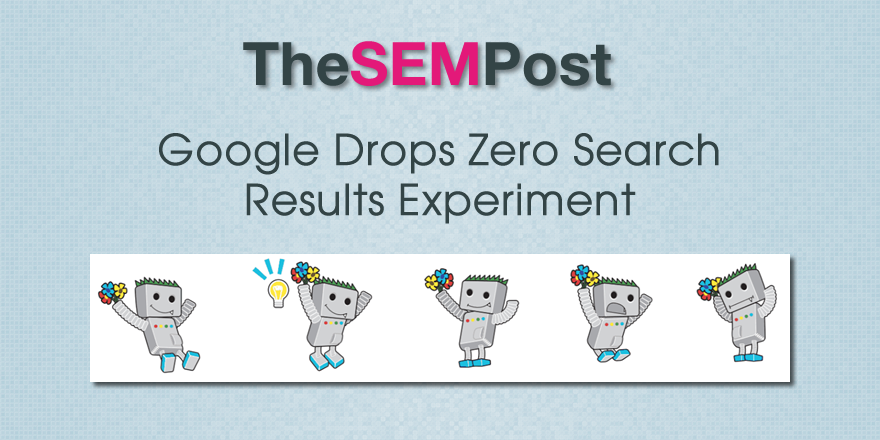 Many SEOs were alarmed when Google began showing answer boxes in the search results without showing any additional search results. The experiment, which began last week, was to serve searchers the answer up to half a second faster, especially since most searchers didn’t actually click through to any search results, as the answer box showed the answer most wanted.
Many SEOs were alarmed when Google began showing answer boxes in the search results without showing any additional search results. The experiment, which began last week, was to serve searchers the answer up to half a second faster, especially since most searchers didn’t actually click through to any search results, as the answer box showed the answer most wanted.
Danny Sullivan, Search Liason at Google, announced that they have ended the zero serp experiment.
Update! We have enough data and feedback — which is appreciated — to conclude that the condensed view experiment should stop for now. The team will look at improving when and how it appears.
— Danny Sullivan (@dannysullivan) March 20, 2018
He also added that it did save a half second, which was Google’s main motivation for making the change originally.
It varies. I shared some examples of it cutting up to half a second — which is actually a lot. It's even more useful if you're on a slow connection. That really was the main motivator, to speed results for these specific cases where few actually went beyond the tool info.
— Danny Sullivan (@dannysullivan) March 20, 2018
One of the other issues with this test that SEOs had is that Google was sometimes showing both Google AdWords and Google Product Listing Ads (aka Shopping Ads) along with these answer boxes, without any other search results. As I questioned on Twitter, it is unclear why Google didn’t simply prevent ads from being shown on search results pages that were only showing this answer box without any regular search results.
That said, why doesn't Google just disable ads on any search result that shows only an answer box and no organic results? It can't be that difficult… cc @dannysullivan @johnmu @methode
— Jennifer Slegg (@jenstar) March 20, 2018
Nathan Johns from Google said these were edge cases, which Sullivan also confirmed as examples where Google should not have displayed any ads.
It sounds as though Google may relaunch this after some kind of a revamp, based on Sullivan’s comment:
The team will look at improving when and how it appears.
But it is unclear what that could be. Simply launching it on mobile where speed is a bigger issue than desktop where they were already running it? Or looking at displaying it in a different format?
Jennifer Slegg
Latest posts by Jennifer Slegg (see all)
- 2022 Update for Google Quality Rater Guidelines – Big YMYL Updates - August 1, 2022
- Google Quality Rater Guidelines: The Low Quality 2021 Update - October 19, 2021
- Rethinking Affiliate Sites With Google’s Product Review Update - April 23, 2021
- New Google Quality Rater Guidelines, Update Adds Emphasis on Needs Met - October 16, 2020
- Google Updates Experiment Statistics for Quality Raters - October 6, 2020